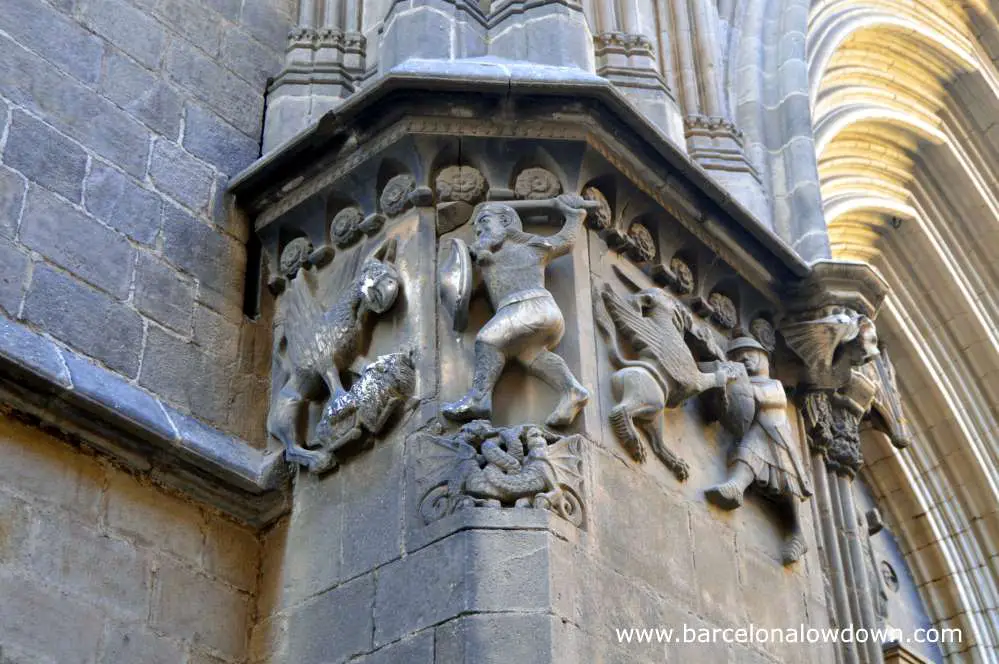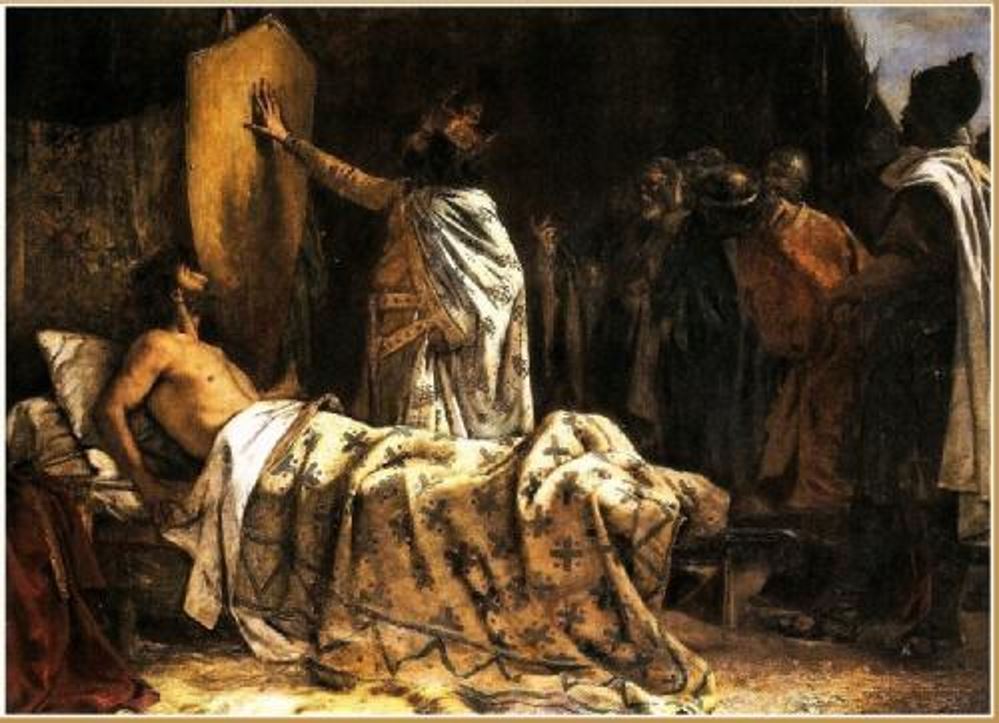Tucked away beside the north entrance to Barcelona Cathedral, there is a small stone sculpture of an extremely hairy knight fighting what looks like a griffin. The knight is Wilfred the Hairy (Guifré el Pilòs), who was Count of Barcelona from 878 until his death in 897.

Wilfred the Hairy was born in 840 in Prades (France) and was the Count of Urgel, Cerdenya, Girona, Ausona Barcelona and Besalú, titles which were given to him by Charles the Bald and his son Louis the Stammerer.
At a time when most of what is now Catalonia was part of the Carolingian empire, and the majority of the Iberian Peninsula was ruled by the Emirate of Córdoba. Wilfred the Hairy united his territories and repopulated the area surrounding Vic, which had become a no-man’s land separating Christian and Muslim-controlled areas.
By the end of the 9th Century, the Carolingian empire had begun to disintegrate, and Wilfred the Hairy was the first of the Catalan counts to transfer his titles by inheritance to his sons. Because of this, he is often credited with founding an independent Catalonia.
He died in 897 defending Barcelona from the troops of Lubb ibn Muhammed.
The Legends of Wilfred the Hairy
Over the centuries two popular legends have grown up around Wilfred the Hairy:
The Origins of the Catalan Flag (La Senyera)
There are several variations on this legend which is commonly attributed to the 16th century historian Pere Antoni Beuter.
According to the legend Wilfred the Hairy lay injured in his tent after doing battle with the Normans (or the Moors) when Charles the Bald (or Louis the Stammerer) visited him. The king asked Wilfred how he could reward him for his heroic deeds.
When he asked for an insignia to decorate his shield, the king wet his fingers with the Count’s blood and traced 4 vertical lines on the golden shield that stood by his bedside. Thus the coat of arms of Barcelona became 4 vertical red bars on a golden background, design which is also used for the Catalan flag or Senyera.
Other versions of the legend combine the two stories by saying that the golden shield was first given to Wilfred the Hairy by Charles the Bald and then the 4 bars added by Louis the Stammerer. Either way, it is just a legend and unlikely to be true since coats of arms and heraldic shields didn’t start to be used until sometime in the 12th century.

Wilfred the Hairy and the Dragon
The second legend attributed to Wilfred the Hairy is basically a slightly modified version of the legend of St George and the dragon. Allegedly, the Moorish Caliphates brought a young dragon with them from Africa. Half reptile and half bird, the beast lived in a cave near Sant Llorenc del Munt where it ate the locals’ cattle and grew to giant proportions. As it grew the monster got steadily more bloodthirsty and terrorized nearby towns and villages. Wilfred the Hairy sent his best knights to fight the dragon but they were all defeated.
Finally the Count decided that he would slay the beast himself. He set off to fight the dragon armed with sword, shield and a tree trunk. When confronted, the dragon took hold of the tree trunk and soared up into the sky. Wilfred remained calm and stabbed the creature with his sword. The dragon fell to the ground dead and was carried to Barcelona where it was displayed as proof of the Count’s bravery. Source
You can find out more about Wilfred’s life on Wikipedia
Location
The sculpture is located to the left of the cathedral doors as you face Barcelona cathedral in the Plaça de Sant Iu.
How to get there
The nearest metro station is Jaume I on the yellow line (L4)
Other attractions nearby
- Barcelona Cathedral
- Frederic Marès Museum
- Plaça de Sant Felip Neri
- Jewish Quarter (El Call)
- Plaça Ramon Berenguer el Gran
Map
Plaça de Sant Iu, Barcelona




Hi
Thanks for the info it helped me a lot
You’re welcome. Thanks for your comment.